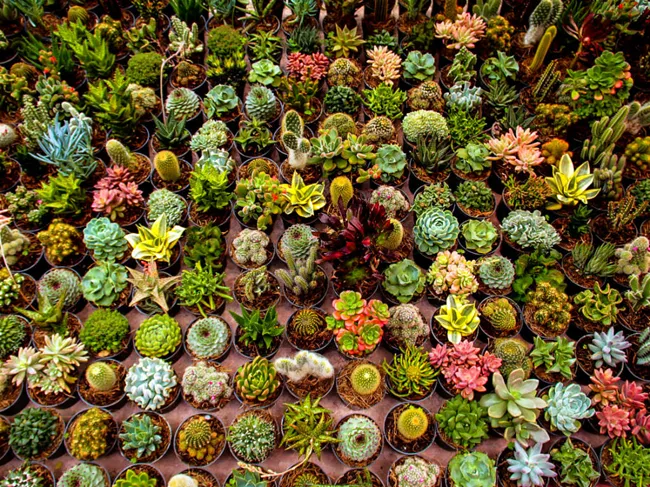Succulents are popular for their unique shapes, vibrant colors, and low-maintenance nature. These resilient plants store water in their leaves, making them ideal for both indoor and outdoor gardening. Potting small succulents correctly is essential to ensure their health and longevity. This guide provides step-by-step instructions and expert tips to help you pot your small succulents successfully.
Choosing the Right Pot
Selecting an appropriate pot is the first step in potting succulents.
Drainage Holes: Ensure the pot has drainage holes at the bottom. This allows excess water to escape, preventing root rot—a common issue with succulents.
Material: Terracotta or unglazed ceramic pots are ideal as they are porous and allow the soil to dry out more quickly.
Size: Choose a pot that is slightly larger than the succulent’s root ball. A pot that’s too large can retain excess moisture, increasing the risk of overwatering.
Preparing the Soil
Succulents require well-draining soil to thrive.
Commercial Mixes: Use a cactus or succulent potting mix available at garden centers.
DIY Mix: Combine regular potting soil with coarse sand, perlite, or pumice in a 1:1 ratio to enhance drainage.
Avoid using regular potting soil alone, as it retains too much moisture for succulents.
Planting Your Succulent
Follow these steps to pot your succulent properly:
Fill the Pot: Place a layer of the prepared soil mix into the pot, filling it about two-thirds full.
Remove the Plant: Gently take the succulent out of its current container, being careful not to damage the roots.
Place the Succulent: Position the succulent in the center of the new pot.
Add Soil: Fill in around the plant with additional soil mix, ensuring the base of the leaves sits above the soil to prevent rot.
Settle the Soil: Lightly press the soil down to eliminate air pockets, but avoid compacting it too much.
Watering Guidelines
Proper watering is crucial for succulent health.
Initial Watering: After potting, wait 3–5 days before watering to allow any root damage to heal.
Soak and Dry Method: Water the soil thoroughly until water drains out of the bottom, then allow the soil to dry completely before the next watering.
Frequency: Typically, water every 1–2 weeks, but adjust based on the environment. In warmer months, succulents may need more frequent watering, while in cooler months, less frequent.
Signs of Overwatering: Mushy or translucent leaves indicate overwatering.
Signs of Underwatering: Wrinkled or shriveled leaves suggest the plant needs water.
Providing Adequate Light
Light is essential for succulent growth.
Indoor Placement: Place succulents near a south or east-facing window where they can receive 4–6 hours of bright, indirect sunlight daily.
Outdoor Placement: Gradually introduce succulents to direct sunlight to prevent sunburn. Start with morning sun and increase exposure over time.
Artificial Lighting: If natural light is insufficient, use grow lights designed for succulents to supplement their light requirements.
Fertilizing Your Succulent
While succulents don’t require frequent fertilization, occasional feeding can promote growth.
Type of Fertilizer: Use a balanced, water-soluble fertilizer diluted to half strength.
Frequency: Fertilize once during the growing season (spring or early summer). Avoid fertilizing in the dormant season (fall and winter).
Monitoring Temperature and Humidity
Succulents prefer specific environmental conditions.
Temperature: Ideal temperatures range between 60°F and 80°F (15°C to 27°C).
Humidity: Succulents thrive in low-humidity environments. Ensure good air circulation to prevent mold and rot.
Common Mistakes to Avoid
Being aware of common pitfalls can help keep your succulents healthy.
Overwatering: This is the most common mistake. Always allow the soil to dry out completely between waterings.
Poor Drainage: Using pots without drainage holes or heavy soils can lead to water retention and root rot.
Insufficient Light: Lack of adequate light can cause etiolation, where the plant becomes leggy and stretched.
Overcrowding: Planting succulents too closely can restrict airflow and increase the risk of disease.
Conclusion
Potting small succulents is a straightforward process that, when done correctly, ensures your plants remain healthy and vibrant. By selecting the right pot and soil, providing adequate light and water, and avoiding common mistakes, you can enjoy the beauty of succulents in your home or garden for years to come.
Related Topics:


